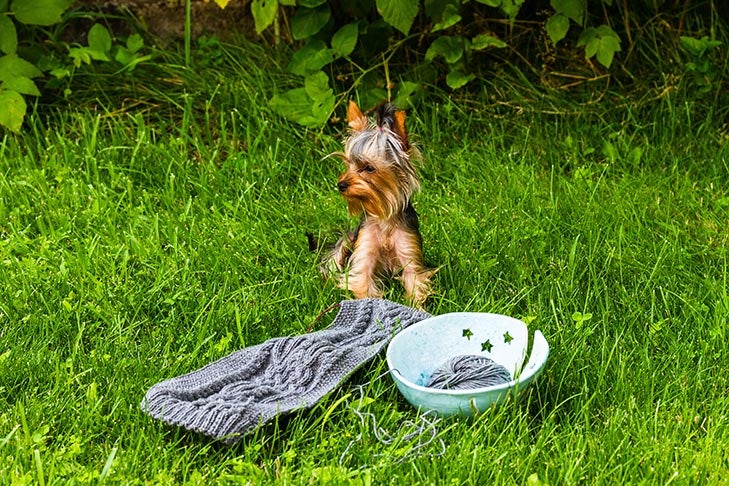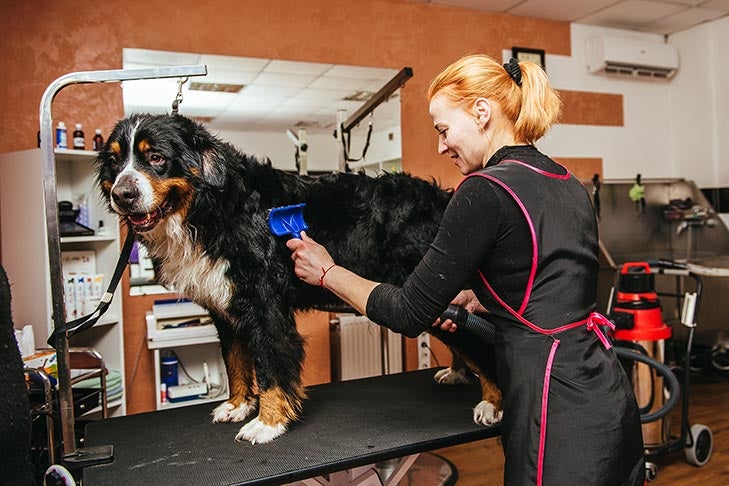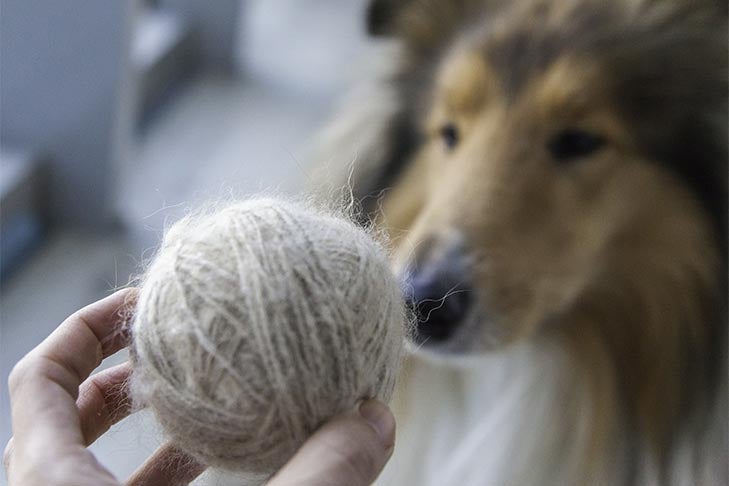
When it comes to brushing your dog, the last thing you probably think about is sheep. But just like those fuzzy barnyard animals, your dog’s coat can be a valuable resource. Dog fur can be spun into yarn, just like wool, and then knit into anything you like, from sweaters to slippers. In fact, people have been doing it for centuries. Here’s a primer for knitting with your dog’s fur.
How to Spin Dog Hair Into Yarn
The official term for dog-fur yarn is “chiengora” (“chien” is French for dog). Long undercoats, as seen on dogs like the Chow Chow, Bernese Mountain Dog, or Samoyed, work best. Keep in mind that each strand of hair should be at least one-and-one-half inches long. Longer fibers spin better, which helps produce a stronger yarn.

If your dog has a shorter undercoat, you can still produce yarn with his fur by mixing it with more traditional fibers, like sheep or alpaca wool. And if you have a dog with super-short hair, such as a Doberman Pinscher, strands of fur can be sprinkled into longer fibers during production. However, those sprinkled bits can fall out of a knitted item over time.
Making yarn is a painstaking job that takes about two hours. First, the clippings are carded, using a brush or comb to align the individual hairs. Next, the fur is spun into a long strand, using a spinning wheel. Afterward, the finished yarn is wound into skeins or balls. The fur can be washed before it’s carded or after it’s spun to remove the doggie smell and any dirt.
If you’re not a do-it-yourselfer, companies such as Dog Wool in France or Knit Your Dog in the United States will turn your dog’s fur into chiengora. Knit Your Dog will even do the knitting for you. Both sites provide tips for collecting your pup’s fur.
How Much Fur Do You Need?
For small items, like mittens, you may need to collect a grocery bag full of fur. And, of course, larger garments will require much more. The pattern and stitch for your finished garment will also have an impact on the amount of fur needed. As a rule of thumb, typically one ounce of dog hair can make up to 70 yards of wool.
Sheep’s Wool vs. Dog-Fur Yarn
Chiengora is more like angora wool (yarn made from the fur of the Angora rabbit or Angora goat) than sheep’s wool. Both have a halo — soft fuzz surrounding the outside of any knitted item. That makes for a cozy and sumptuous quality in chiengora garments. It also adds to chiengora’s warmth. Dog-fur items are far warmer than those made from sheep’s wool.

Just as wet wool doesn’t smell like sheep, wet chiengora doesn’t smell like wet dog. It smells like wet yarn. And dog fur doesn’t have the crimps and microscopic barbs of sheep’s wool that lead to stretch and shrinkage. However, you should take care when washing chiengora, as you would with any wool or angora garment. Gently hand wash in warm water with a soap specially designed for wool, and then lay the item flat to dry.
Make a Statement
Just like when you happily wear the wool of sheep or enjoy the soft feel of silk made from the cocoons of silkworms, you can be proud to incorporate chiengora clothing and accessories into your wardrobe. After all, you know exactly where they come from.
If you aren’t comfortable wearing dog fur yourself, you can knit a teddy bear, place mats, or decorations. For the ultimate level of recycling, you can even knit accessories and sweaters for your canine companion. Having double the fur coat will help keep him warm on cold days. Rather than bemoaning your dog’s shed fur, collect it and get crafty!

